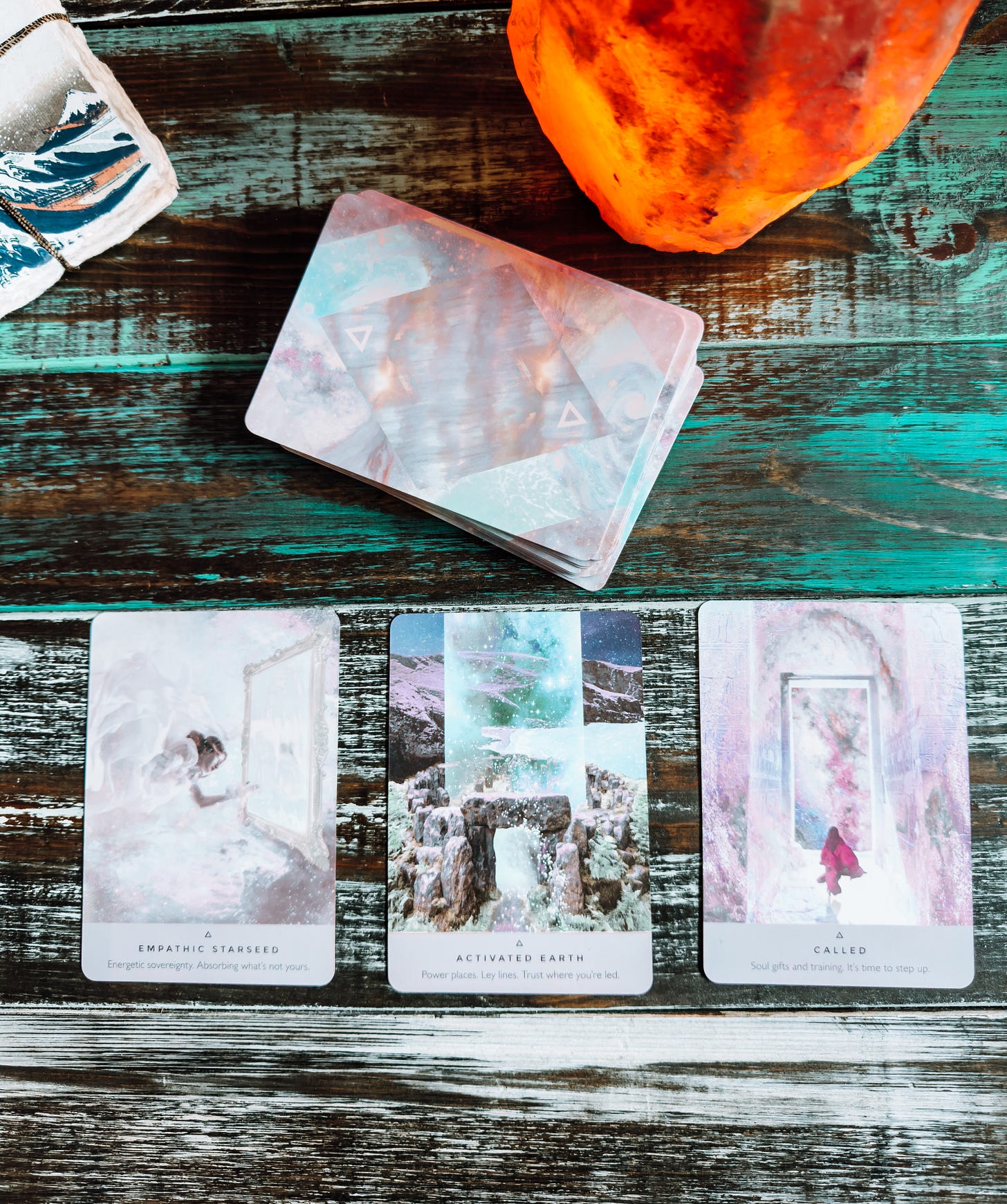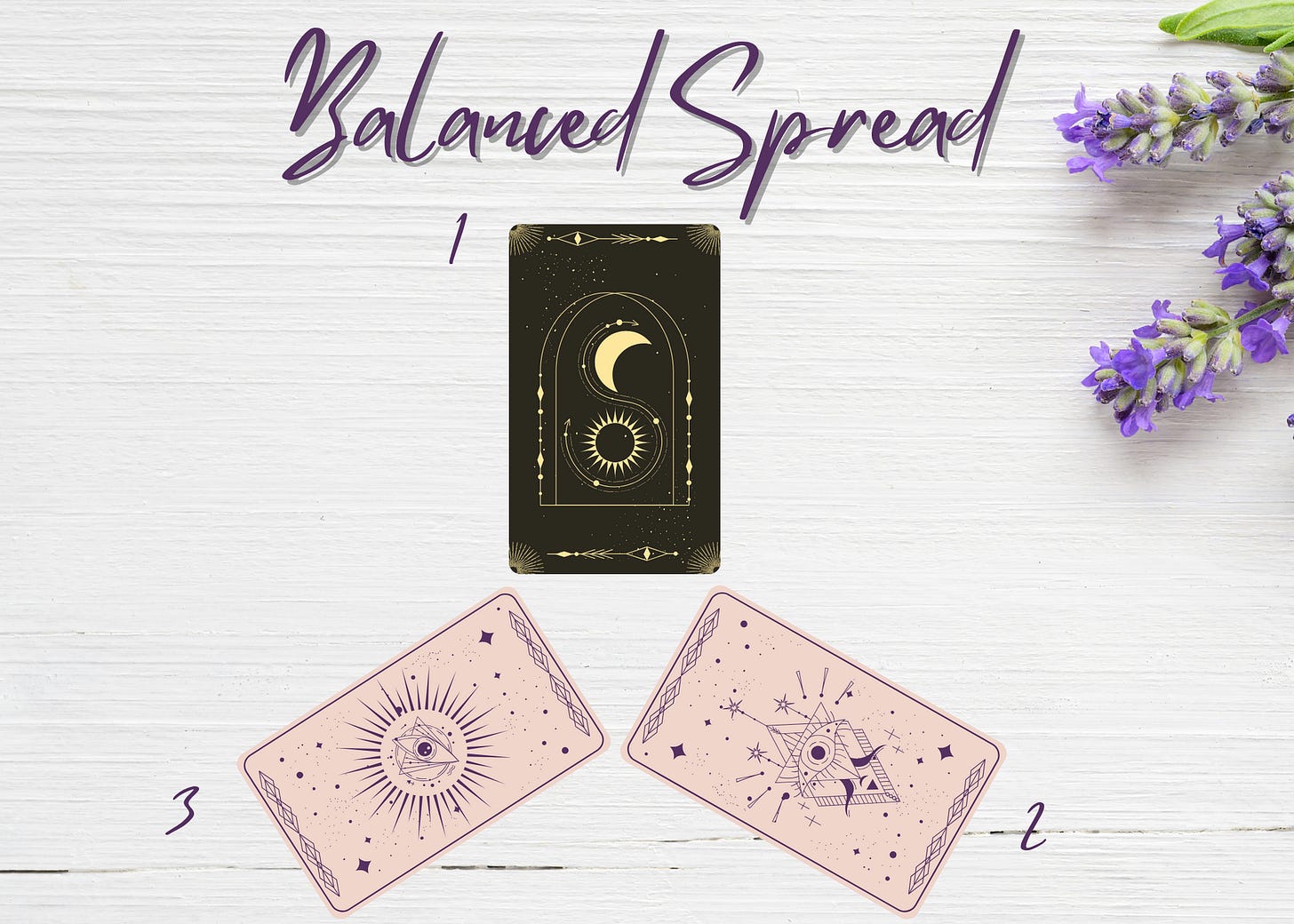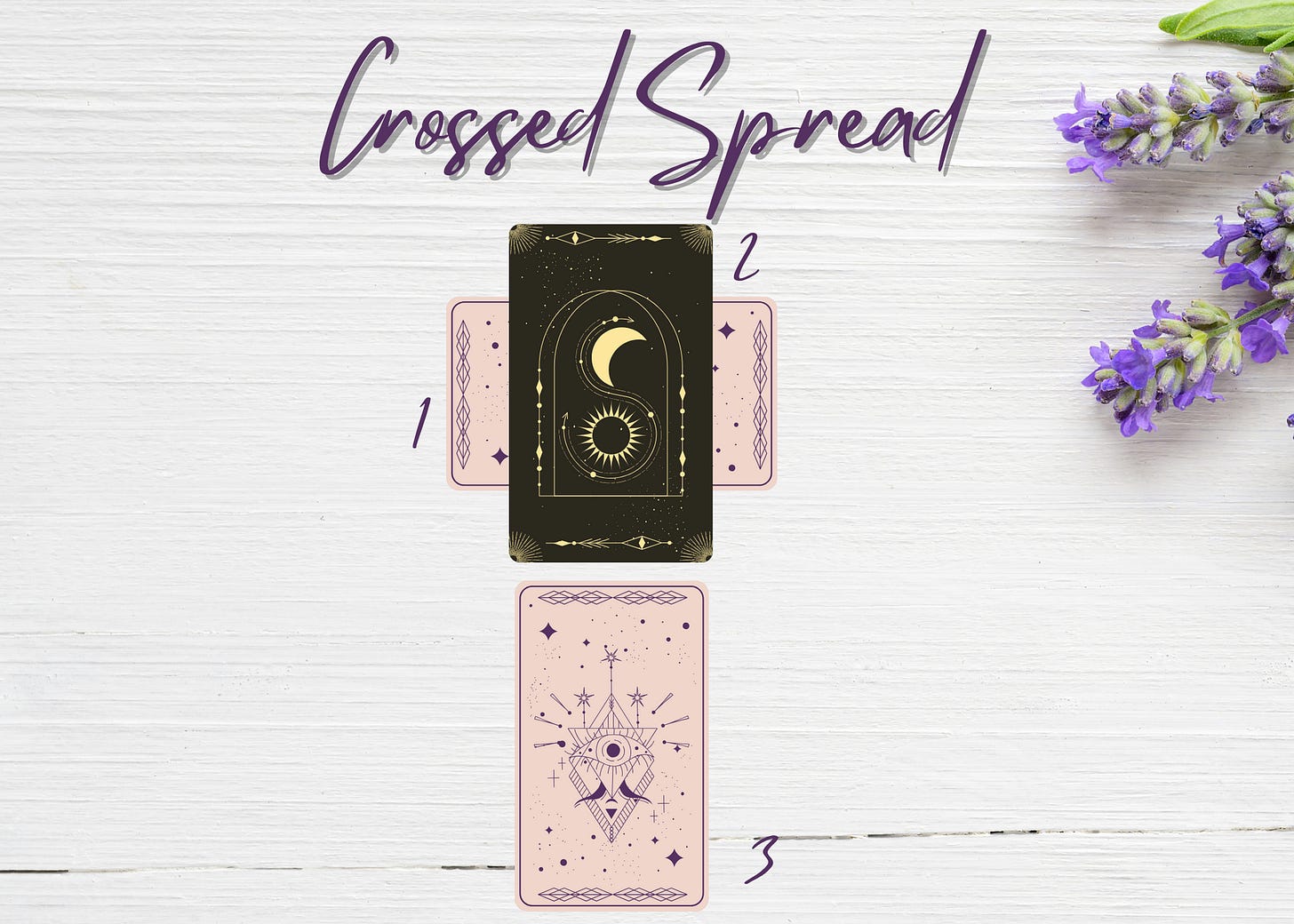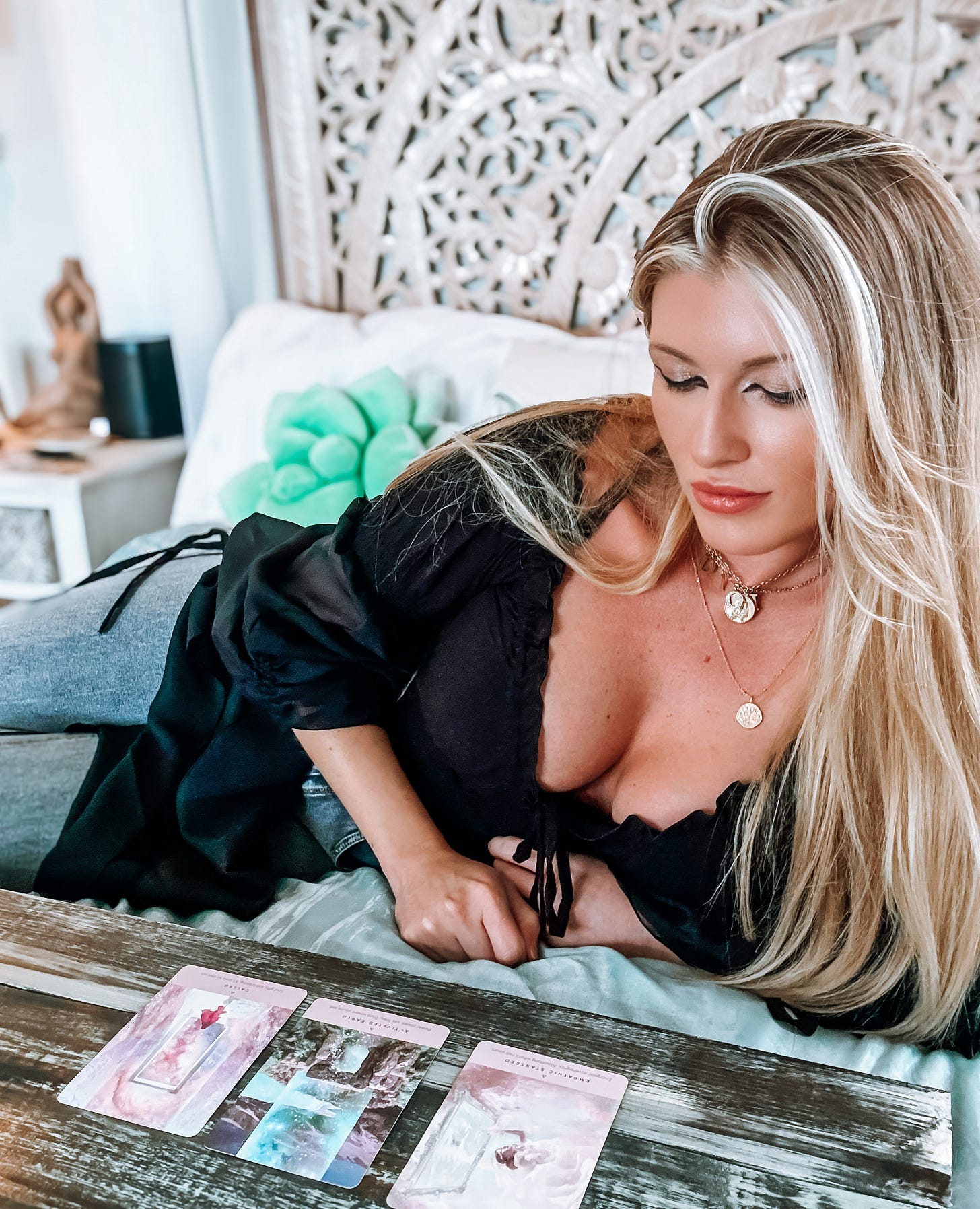I haven’t written on the topic of metaphysics in many years. It is a topic of deep controversy and I fully respect that magic in general is nothing but something for everyone. However, it’s a topic that I have been aching to write and talk more about because it is deeply woven into my very spirit.
I’ve practiced Reiki since 2006 when I received my certifications in Reiki levels 1, 2, and Master, incorporating a combination of Reiki, sound bath, and chakra-specific meditations into my practice. I was lucky enough to later meet a woman in 2016 who not only taught me aerial yoga but also helped me gain my certification. It was during her Goddess retreats that I learned to use oracle cards, practice a more intuitive form of reiki, and embrace a more holistic approach to life itself.
Since then, oracle card readings have been part of my ritual practices. During a rough time, I may use them daily, but most often I use them on Sunday nights in conjunction with a meditation practice to help set a tone for the week and seek guidance for the days ahead.
During my studies, intuitive practice, and sessions with other healers, I’ve developed a set of go-to card spreads that never fail to help me get my creative juices flowing, and prepare for potential pitfalls or challenges.
It is no wonder that three card readings are some of the most popular oracle card readings. Three-card spreads are great for beginners and seasoned practitioners alike. They are also customizable for whatever you’re working on.
Tips to Start Your Reading
The first question many people ask is, “What deck do I use?” The answer is simply the one that calls to you most. Some seasoned practitioners will make their own cards, infusing them with their very essence. Many people report handmade cards to be the most effective for their readings, but with the vast array of oracle cards out there, there is something for everyone. The Starseed Oracle deck (shown above is my personal deck) is my favorite and the one I use the most often. It isn’t uncommon, however, for people to have several decks of all kinds and will use different decks for different situations.
To start a reading many people will knock on their deck (usually three times) to wake it up, then shuffle the cards. I prefer to shuffle multiple times, focusing my mind on the question as I shuffle. Most practitioners will say that open-ended questions are best unless you have a deck that will address yes/no questions. It’s generally better to ask, “What do I need to know about ….?” rather than “Should I do ….?”
If a card falls out while you’re shuffling, it is believed that is the answer to your question. If no cards fall out, it doesn’t mean the Universe doesn’t have an answer. Continue to shuffle until you feel ready to start the reading. Some prefer to take the card from the top, however, I prefer to cut the deck and then take a card. Use your intuition and remember, there’s no wrong way to do it!
Linear 3 Card Tarot Spreads
As you can imagine, this layout is good at suggesting some sort of linear path, sequence of events, cause and effect, or an understanding of a path.
Place the cards down from left to right. Depending on your question, the order of the cards could represent:
Card 1: Past Card 2: Present Card 3: Future
Card 1: You Card 2: Your Path Card 3: Your Potential
Card 1: You Card 2: Relationship Card 3: Partner
Card 1: Situation Card 2: Action Card 3: Outcome
Card 1: Idea Card 2: Process Card 3: Aspiration
Balanced 3-Card Tarot Spreads
In a balanced spread, each card has a common intersection. They are placed equally on the table/alter and form a triangle/pyramid in the center. Without any of these, the whole structure collapses.
I find this spread to be helpful when I’m feeling stressed at the start of a week, or I’m struggling with multiple tasks to get done in a day and I don’t know where to start. This spread helps to guide me in understanding which things to prioritize and how they might affect the rest of my being.
Card 1: Mind Card 2: Body Card 3: Spirit
Card 1: Physical State Card 2: Emotional State Card 3: Spiritual State
Card 1: Subconscious Card 2: Conscious Card 3: Super Conscious
Card 1: Option 1 Card 2: Option 2 Card 3: Option 3
Card 1: What I think Card 2: What I feel Card 3: What I do
Foundational 3-Card Tarot Spreads
Foundational spreads are like a metaphysical equation. Card 1 represents one part of the equation, card 2 is the other part, and card 3 is the outcome or answer. Cards 1 and 2 attempt to give you an understanding of the options or parts at play, while card 3 is more like the summary or understanding of how to move forward. Here are some examples of what the cards may represent in this spread:
Card 1: Your strengths Card 2: Your weaknesses Card 3: Advice
Card 1: What has worked well Card 2: What didn’t work well Card 3: The Lesson Learned
Card 1: This brings you together Card 2: This pulls you apart Card 3: You should focus on this
Card 1: You want this from a relationship Card 2: Your partner wants this from a relationship Card 3: Your relationship’s path is this
Card 1: Option 1 Card 2: Option 2 Card 3: This is what you need to know to make the best decision
Crossed 3-Card Tarot Spreads
This is a great spread for challenging situations. It can help you understand and think about the pieces of a conflict, obstacles in your path, and how to overcome them. The card that crosses over card 1 represents the obstacle or something that is blocking you from your goal. Card 3, as you might have guessed, is the advice or path given to help you break through the obstacle.
I use this spread most often when I’m struggling to reach goals I’ve set for myself and I need advice on what I should be focusing on, or what I should adjust to help meet those goals. As someone with ADHD, I find the static in my head often gets in the way of me being able to see the full picture, and the advice the cards give helps provide a focus point to work through something.
Finishing Your Reading
Regardless of the spread you use, I find it helpful to thank the energies that helped bring forth the guidance in the cards. Some people also find it helpful to keep a tarot or oracle card journal to document the experience with their cards, the questions asked, the guidance given, and feelings/emotions/intuitions received during the reading. This helps you get more familiar with the cards, and for the energies around the cards to get familiar with you as well. You don’t need more for this, just a simple notebook will do. I’ve used a variety over the years from journals made of natural materials to actual oracle journals like this one.
Regardless of how you choose to practice, there is no right or wrong way. The suggestions and information here are just that… suggestions. I encourage you to experiment and see what feels best to you and enjoy the experience.
- Tiffany











